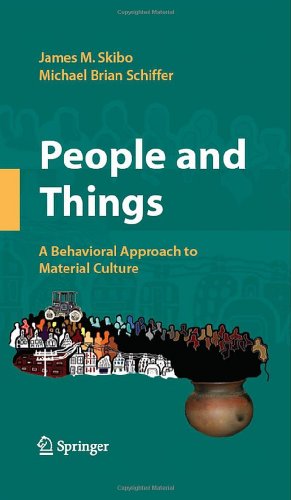

Most ebook files are in PDF format, so you can easily read them using various software such as Foxit Reader or directly on the Google Chrome browser.
Some ebook files are released by publishers in other formats such as .awz, .mobi, .epub, .fb2, etc. You may need to install specific software to read these formats on mobile/PC, such as Calibre.
Please read the tutorial at this link: https://ebookbell.com/faq
We offer FREE conversion to the popular formats you request; however, this may take some time. Therefore, right after payment, please email us, and we will try to provide the service as quickly as possible.
For some exceptional file formats or broken links (if any), please refrain from opening any disputes. Instead, email us first, and we will try to assist within a maximum of 6 hours.
EbookBell Team

0.0
0 reviewsPeople and Things: A Behavioral Approach to Material Culture
James M. Skibo, Department of Anthropology, University of Illinois, Normal, IL
Michael B. Schiffer, Department of Anthropology, University of Arizona, Tucson, AZ
The core of archaeology is the relationship between people and things. Left without informants and, in many cases, textual data, archaeologists strive to reconstruct past life through the window of artifacts: things made, used, and modified by individuals while participating in the activities of everyday life. According to behavioral archaeologists, our ability to understand the relationship between people and things in the present is the foundation for archaeological reconstruction of the past.
This comprehensive text sets forth a theory for understanding the relationship between people and things. Humans, whether in the distant past or in our current world, make choices while inventing, developing, replicating, adopting, and using their technologies. A wide arc of factors, from utilitarian to social and religious can affect these choices. The theoretical model presented here provides the means to understand how people, whether it be Paleolithic stone tool makers or 21st century computer designers and users, negotiate these myriad factors throughout the artifact’s life history. While setting forth a behavioral theory, the book also engages the ideas of other competing theories, focusing especially on agency, practice, and selectionism.
Six case studies form the core of the book, and provide clear examples of how the theory can be applied to a range of artifacts and people from prehistoric North American ball courts and smudge pits to the first electric cars and 19th century electromagnetic telegraph technologies. This book provides the reader, for the first time between two covers, a wide array of examples that can guide their own work.
Archaeology and anthropology graduate students will find this book of interest. Twenty years in the making, this work will be an essential tool for new scholars as well as experienced members in the field of archaeology or any researcher who investigates technology.